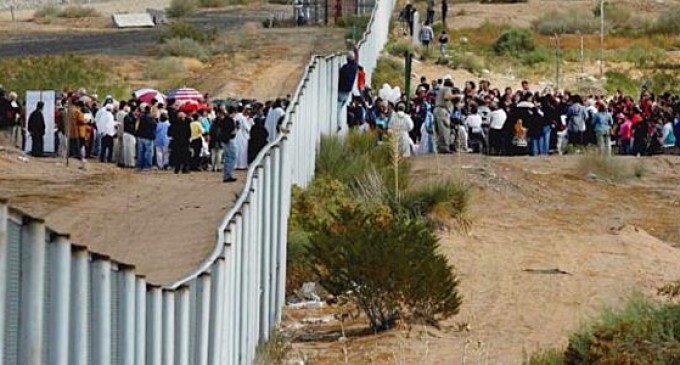
Judge Beryl Howell, appointed by Obama to the U.S. District Court for the District of Columbia in 2010, just ruled that the Mexican border fence is racist.
The ruling states that the border fence may have a “disparate impact on lower-income minority communities.”
So now we can’t even protect our borders because of ‘political correctness’.
A Homeland Security initiative to put fencing along the U.S.-Mexico border could discriminate against minorities, according to an Obama-appointed federal judge who’s ruled that the congressionally-approved project may have a “disparate impact on lower-income minority communities.”This of course means that protecting the porous—and increasingly violent—southern border is politically incorrect. At least that’s what the public college professor at the center of the case is working to prove and this month she got help from a sympathetic federal judge. Denise Gilman, a clinical professor at the taxpayer-funded University of Texas-Austin, is researching the “human rights impact” of erecting a barrier to protect the U.S. from terrorists, illegal immigrants, drug traffickers and other serious threats.
A 2006 federal law orders the construction of fencing or a wall along the most vulnerable portions of the nearly 2,000-mile southern border. This includes reinforced fencing along 700 miles of the southwest border with the Department of Homeland Security (DHS) determining the exact spots. Professor Gilman wants the identities of the landowners in the planned construction site to shed light on the impact the fencing will have on indigenous, minority and low-income communities. The feds refused to provide the information, asserting that it’s private.
The professor sued in federal court arguing that the public interest in how the fence will impact landowners outweighed any privacy concerns. The data will allow the public to analyze whether the government is treating property owners equally and fairly or whether the wall is being built in such a way that it disadvantages “minority property owners,” according to the professor. It will also help the public understand the actual dimensions of the wall and decisions related to where it’s placed.
Judge Beryl Howell, appointed to the U.S. District Court for the District of Columbia by President Obama in 2010, agreed that the public interest is significant. Her 37-page ruling also seems to indicate that she bought the discrimination argument. “Revealing the identities of landowners in the wall’s planned construction site may shed light on the impact on indigenous communities, the disparate impact on lower-income minority communities, and the practices of private contractors,” Howell wrote.
This is simply the latest controversy to strike the border fence project since Congress approved it to protect national security and curb an illegal immigration and drug-trafficking crisis. In the last few years the mayors of several Texas border towns have blocked federal access to areas where the fence is scheduled to be built, an Indian tribe tried to block the barrier in the Arizona desert by claiming the feds were intruding on tribal land and a group of government scientists claimed the fencing would threaten the black bear population.

Asinine !!!
That Judge needs to be removed from Office !!
ANYTHING THEY DON’T LIKE IS RACIST ITS ALL IDIOTS CAN SAY THEY WOULD CALL GOD RACIST .
YOU R LOOKING AT OBUMHOE N LIBS AMERICA N THIS PIC.
security is racist all right we dont want foreigners to kill us. That is about as racist as you can get.
a judge has no right legally to weigh in on what he called racist. If it were discrimination he would have a say but to be discriminated against you have to be a legal citizen in america. This judge and obama are both idiots not worth the powder it would take to blow their own brains out………
LIKE I give a $#%&!@* put up the fence
“SHE” is a really fugly democrat. Has nothing but stupid in her genes.
Obama, just seeing your face is offensive to me and has a disparate impact on my psyche! Let each state do what it must to protect it’s US citizens!
Fence needs to be the full 1200 miles long and electrified and Obama needs to be personally responsible for every one of the kids coming across our borders these days based on HIS executive order from 2011.